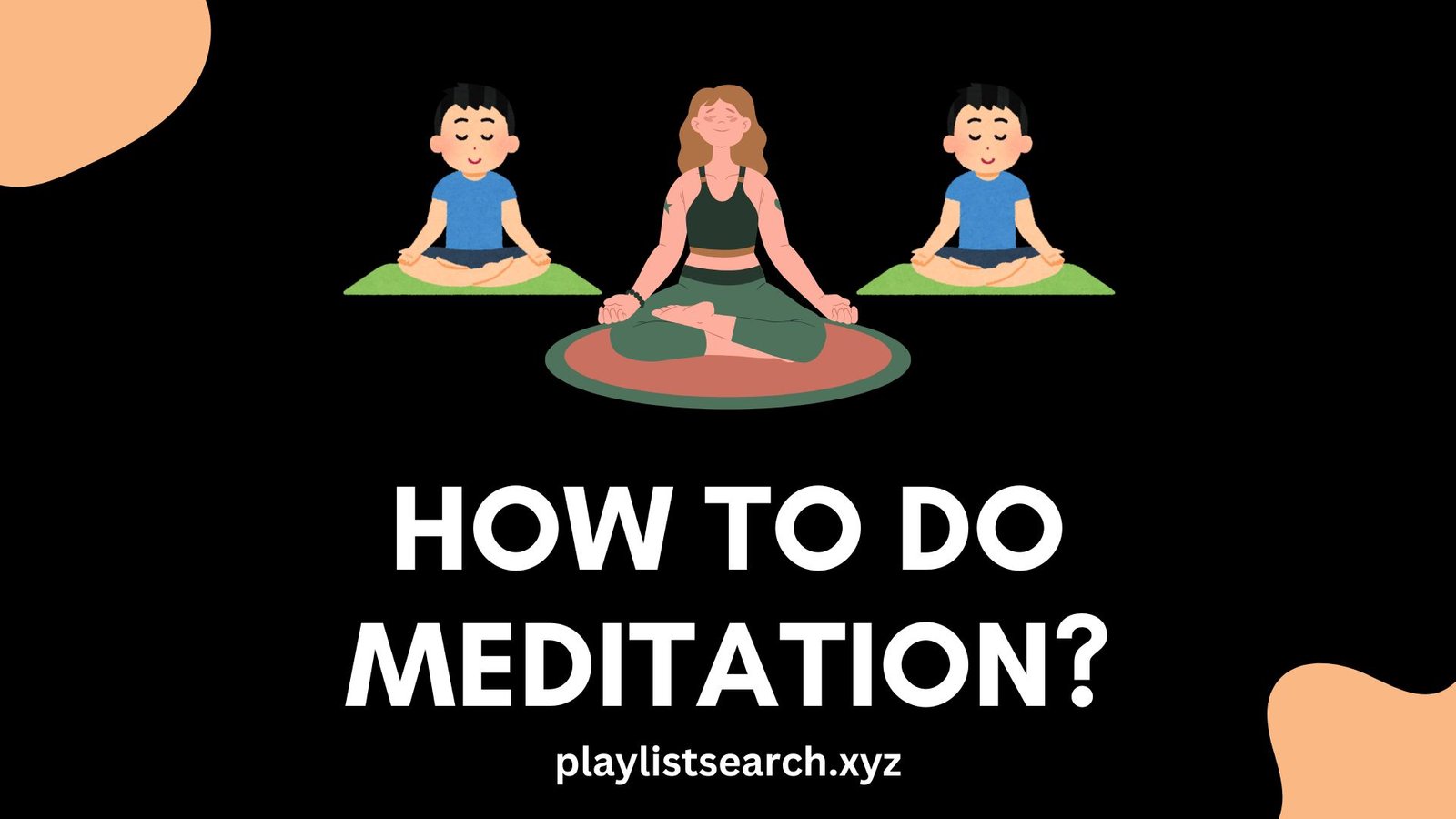Hello friends, welcome to our new blog post today. In today’s new blog post, we will talk about How to do Yoga and meditation are considered highly beneficial means for our mental and physical health. This practice not only improves our physical condition, but also provides mental and spiritual peace. The importance of meditation has been told in Indian culture for thousands of years, and nowadays it has become a famous technique all over the world. However, there are many methods and systems of meditation, by adopting which we can increase the power of our body and mind and get many miraculous benefits.

How to do Meditation?
How to do Meditation?: Meditation is a mental practice that gives us mental peace, clarity, balance. It is beneficial for our physical, mental, and emotional health. Practicing meditation does not depend on any particular place or situation. You can do it in your home, office, or any quiet place. In this article we will learn in detail how to meditate and what are its benefits.
There are many types of meditation practices, such as pranayama, mantra japa, concentration, etc. All are aimed at achieving mental peace and inner awareness. It not only causes mental peace, but also brings positive changes at the physical and emotional level.
Ways to do Meditation
- Choose a Quiet Place
Choose a quiet and comfortable place for meditation. It can be any place where you find peace, such as a corner of a room, a garden or an open space with minimal distractions.
- Sit in a Comfortable Posture
You need to sit in a comfortable position so that there is no discomfort in the body while meditating. You can sit in any of the following postures:
Sukhasana (Cross-legged posture): Keep the legs crossed, back straight.
Padmasana (Lotus posture): If possible, sit with legs crossed.
Sitting on a chair: If sitting on the floor is uncomfortable, you can sit on a comfortable chair.
Keep your back and neck straight, keeping the body loose and comfortable.
Read and More Article:-samas-ke-kitne-bhed-hote-haiaaiye-jane-inke-rochak-roop
- Close Your Eyes
Now close your eyes. This will help you divert your attention from the outside world and you will be able to focus on your inner world. Meditation kaise kare
- Focus on Your Breathing
Take deep breaths slowly. Inhale deeply through the nose, and then exhale slowly through the mouth. Repeat this process 5-10 times.
As you breathe, focus on the air coming in and going out of your body.
This will help you stay calm and focused.
- Let Go of Thoughts
When you meditate, many thoughts may come to your mind. This is normal. Whenever a thought comes, calmly acknowledge it and let it go. Then return to your breath or the element of focus. - Use a Mantra
If you want, you can chant a word or mantra (such as “Om”, “So Hum”, “Shanti”). This word helps to calm your mind more. You can also say it out loud or chant it silently. - Set a Time Limit
In the beginning, keep the duration of meditation short, such as 5-10 minutes. As you become more adept at the practice, you can increase it to 15-30 minutes. It may be a good idea to set a timer so that you do not have to worry about time. - Make it a Habit
The greatest benefits of meditation are achieved when it is done regularly. In the beginning, you should try to meditate for 5-10 minutes, and gradually increase it to 20-30 minutes.
Meditation Types
Meditation kaise kare Types of meditation include many different techniques, which are suitable for different purposes and mental states. Each type of meditation promotes a particular type of mental peace, awareness and balance. Let us understand these different meditation types in detail:
- Mindfulness Meditation
Mindfulness meditation, also known as “Vipassana meditation”, is a type of meditation in which we focus completely on our present experience. Its main purpose is to experience our thoughts, feelings, physical sensations and external surroundings with full awareness. There is no judgment or reaction to anything in it. We simply observe, without any mental evaluation.
How to do it?
Sit in a comfortable posture with your eyes closed.
Focus on your breathing, thoughts, or physical sensations.
If a thought or feeling comes up, acknowledge it and then let it go without judgment.
Keep your focus on the present moment, not on the past or the future.

Leave a Reply